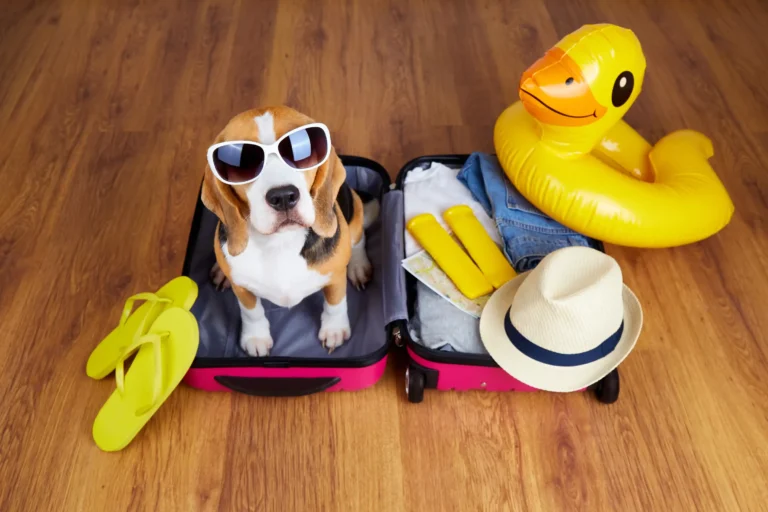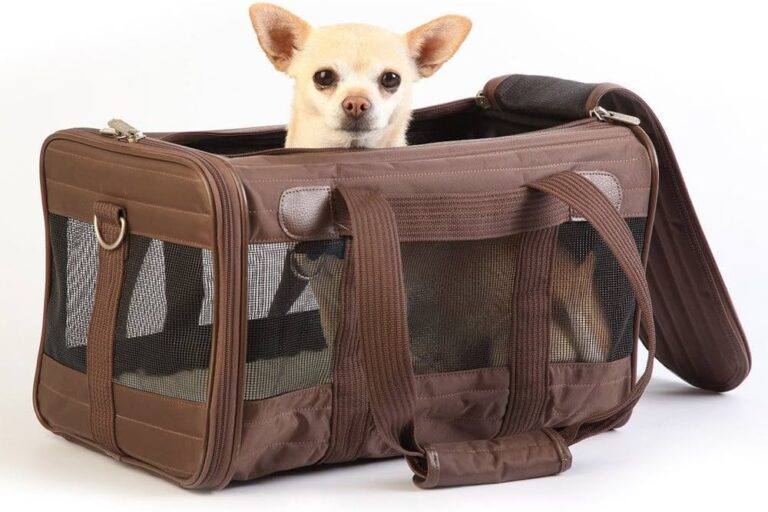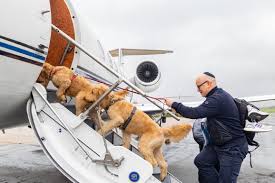Traveling with a small dog breed can be an exciting adventure, but ensuring their well-being during the journey is crucial. Among the many considerations, one key aspect often overlooked by pet parents is the importance of packing the right travel snacks. This comprehensive guide titled “Jet-Set Pups: Top Travel Snacks for Small Dog Breeds to Keep Your Furry Companion Happy and Healthy on the Go!” is designed to help pet parents make smart, health-conscious choices about their little companion’s travel nourishment.
The focus of this detailed guide is on the ideal travel snacks that not only satisfy your dog’s hunger pangs but also cater to their nutritional needs. We delve into an array of snacks suitable for different breeds, dietary restrictions, and even specific travel conditions. Whether you’re driving cross-country, or jetting off to an exotic destination, this guide aims to keep your furry companion’s tummy happy and health in check.
Moreover, we’ll be highlighting the importance of understanding your pet’s dietary needs, the potential dangers of feeding them the wrong snacks, and how the right snacks can ensure a comfortable and stress-free travel experience. Get ready to explore a realm of flavors that your tiny furball will absolutely love! 🐶🍖
Not just a list, we promise that this guide will provide you with insights on how to make your travels enjoyable and less stressful for your furry friend. After all, they too deserve a happy journey! So sit back, relax and embark on this journey of discovering the best travel snacks for your small breed dog. Your beloved pet’s next travel meal is just a scroll away!
Hydrating Snacks for On-the-Go Refreshment
In addition to carrying fresh water for your dog, offering hydrating snacks can be a great way to maintain fluid balance, especially during long journeys or in hot weather. Fruits and vegetables with high water content not only hydrate but also offer essential vitamins and minerals.
Cucumbers are a favorite choice among pet owners. They are crisp, refreshing, and packed with water, making them an excellent snack on a hot day. Watermelon, another hydrating option, should be served seedless and rind-free to avoid digestive issues. Blueberries offer the dual benefits of hydration and antioxidants, promoting overall health during the stress of travel. Offering these foods as treats between meals can help keep your dog hydrated without overloading them with water at once, which could cause discomfort.
Choosing Safe and Healthy Ingredients
Selecting the right ingredients for your dog’s travel snacks is critical. Not all fruits, vegetables, or meats are safe for canine consumption. Some foods that are perfectly healthy for humans can be toxic to dogs, leading to serious health complications.
Avoid grapes and raisins at all costs, as they can cause kidney failure in dogs. Similarly, onions, garlic, and chives are dangerous and can lead to gastrointestinal irritation or red blood cell damage. Chocolate and anything containing caffeine are also extremely harmful to dogs and should never be included in travel snacks. Always double-check the safety of any new food you introduce into your dog’s diet and opt for single-ingredient treats whenever possible to minimize the risk of allergic reactions or toxic exposure.
Travel-Friendly Snack Packaging Tips
When preparing for a trip with your dog, how you pack their snacks is almost as important as what you pack. Proper packaging ensures that snacks remain fresh, safe, and easy to access during your journey.
Use airtight containers or resealable bags to maintain freshness and prevent contamination. Silicone treat bags are a great eco-friendly option and can be easily cleaned and reused. If you’re bringing homemade treats, portion them into single servings ahead of time to avoid opening large containers frequently, which can expose the snacks to air and bacteria.
Coolers can be useful for trips involving long hours, especially if you are packing perishable items like fresh meat or yogurt-based snacks. For shorter trips, insulated lunch bags with an ice pack may be sufficient to keep your dog’s snacks fresh until needed.
Timing Your Dog’s Snacks During Travel
Timing is a crucial factor in keeping your dog comfortable and avoiding any digestive issues during travel. Offering snacks at the wrong time could lead to an upset stomach, especially if the journey involves lots of movement or excitement.
It is generally best to give your dog a small snack about thirty minutes before setting off. This helps maintain their energy levels without overfilling their stomach. During travel, offer small, light snacks at regular intervals rather than large quantities at once. This approach helps to prevent nausea, bloating, or vomiting, which can occur when dogs eat too much right before or during travel.
Once you arrive at your destination, resume your dog’s normal feeding schedule as quickly as possible. Maintaining consistency is key to avoiding digestive disruptions and ensuring that your dog feels secure in the new environment.
Best Treats for Calming Anxiety During Travel
Travel can be stressful for small dogs, particularly those that are not accustomed to long journeys or new environments. Certain treats can help soothe anxiety naturally, promoting a more relaxed travel experience.
Treats containing calming ingredients like chamomile, valerian root, or L-theanine are excellent options. These ingredients are often found in specially formulated calming chews or biscuits for dogs. In addition, treats with a soft texture are usually easier for stressed dogs to eat, especially if they are feeling a bit nauseous or overwhelmed.
CBD-infused treats have also gained popularity among pet owners. However, it is essential to consult with your veterinarian before offering any CBD products to ensure they are safe and appropriate for your specific dog.
Creating a Balanced Snack Menu
A well-thought-out travel snack plan involves a balance of proteins, fats, carbohydrates, and hydration sources. Too much of any one element can throw off your dog’s digestive balance and cause discomfort.
Aim for a mix of protein-rich treats like turkey jerky or boiled chicken pieces, combined with crunchy vegetable sticks like carrots and hydrating fruits like watermelon slices. For longer trips, include some high-fat options such as peanut butter treats, which provide lasting energy. Always choose unsalted, unsweetened varieties, and offer in moderation due to the high calorie content.
Having a variety of textures, flavors, and nutrients ensures that your dog remains interested in their snacks without overindulging in any one category.
How Environmental Factors Influence Snack Choices
The destination and weather conditions during your travels should influence the type of snacks you pack for your dog. In hot, humid climates, hydrating snacks and lightweight treats that are easy to digest are crucial. Cold destinations might call for higher-calorie treats to help maintain your dog’s body temperature and energy levels.
Altitude changes can also affect your dog’s appetite and hydration needs. Dogs traveling to high altitudes may need more frequent hydration and lighter snacks to prevent gastrointestinal upset. Planning ahead based on your destination ensures your dog remains comfortable and well-nourished throughout your adventure.
Training Opportunities Using Snacks During Travel
Travel snacks can serve more purposes than just nutrition. They are excellent tools for reinforcing positive behaviors and maintaining obedience during travel. Use small, soft treats as rewards when your dog remains calm in the car, successfully navigates through airport security, or settles quietly in a carrier.
Positive reinforcement with treats can also help condition your dog to associate travel with positive experiences. This can be particularly useful for nervous or inexperienced travelers. Be mindful to use training treats sparingly to avoid overfeeding, especially when paired with regular meals and other snacks.
Dealing with Motion Sickness in Small Dogs
Motion sickness is a common problem for small dogs during travel and can make your journey much less enjoyable. Choosing the right snacks and feeding practices can help minimize symptoms.
Feed your dog a small, bland snack like plain boiled chicken or white rice a couple of hours before departure. Avoid heavy, greasy foods that may upset the stomach. During travel, stick to light, non-greasy snacks in small amounts. Ginger treats formulated for dogs can also help with nausea, but be sure to verify safe dosing with your veterinarian beforehand.
If motion sickness persists, speak with your vet about medications or other interventions that can make future travels more comfortable for your pet.
Preparing for Food Allergies and Sensitivities
When selecting travel snacks, it is essential to consider any existing food allergies or sensitivities your dog may have. Introducing new foods during travel can be risky if your dog has a history of adverse reactions.
Stick to familiar treats whenever possible. If you must introduce a new snack, test it at home several days before your trip to ensure your dog tolerates it well. Carry a small first-aid kit that includes antihistamines approved by your veterinarian in case of allergic reactions.
Additionally, bring a detailed list of your dog’s allergies and dietary restrictions, especially if you are traveling internationally or might need emergency veterinary care at your destination.
Preparing Your Dog for Different Time Zones
Traveling across time zones can disrupt your dog’s eating schedule, just as it does for humans. Gradually adjust feeding times by fifteen to thirty minutes per day leading up to your departure to align with the new time zone.

Once you arrive, transition your dog’s snack and meal times to the local schedule as smoothly as possible. Offering familiar snacks during the adjustment period can help maintain their appetite and comfort.
Consistency in snack and meal times is crucial for maintaining digestive health and avoiding behavioral issues related to hunger or confusion about the new routine.
Hydrating Snacks
In addition to water, hydrating snacks can help maintain your dog’s water levels. Cucumbers, watermelon (without seeds), and blueberries can serve as excellent hydrating treats. Strawberries, celery sticks, and cantaloupe are also fantastic choices that are both refreshing and packed with essential nutrients. These fruits and vegetables not only help with hydration but also provide antioxidants and fiber, supporting overall digestive health during travel.
Snack Selection Tips
Choosing the right travel snacks for your small dog breed might seem challenging, but here are a few tips that can make the process easier.
Consult Your Vet
Before introducing new snacks into your dog’s diet, always consult your vet. They can provide guidance based on your pet’s breed, age, weight, and overall health.
Consider Your Dog’s Preferences
Every dog is unique. Some might prefer crunchy treats, while others might enjoy softer options. Test different snacks and see which ones your dog likes the most.
Monitor Your Dog’s Reaction
After introducing new snacks, monitor your dog closely. Look for any changes in behavior, appetite, or bowel movements that could signal a problem.
In conclusion, remember that snacks are not a substitute for meals. They should be used as a tool to keep your pet energized and happy during travel, not as a primary source of nutrition. Always balance snacks with regular meals, and ensure your pet gets plenty of exercise. Safe travels!
Conclusion
In conclusion, when it comes to satisfying your small dog breed’s nutritional needs while on the go, the Jet-Set Pups guide has proven to be an invaluable resource. It has shed light on the fact that, regardless of their size, our furry friends require a balanced diet, particularly when travelling, to maintain their overall health and happiness.
As our article has highlighted, selecting the top travel snacks for your small breed dog is crucial. High-quality snacks not only sustain your pup’s energy levels but also prevent travel-related anxiety and stomach upset. From portable freeze-dried meals to single-ingredient treats and chew toys, there are a plethora of options to choose from.
Equally important is portion control – even the healthiest snacks can lead to weight gain when given in excess. Always remember to consult with your vet to understand the right quantities and frequency of feeding. And of course, ensure that your pup has access to plenty of water during the journey.
Finally, while the variety of snacks available is vast, it’s important to understand your dog’s unique dietary needs and preferences. What works for one dog might not necessarily work for another. As we always say, a happy dog makes a happy owner. Safe travels with your Jet-Set Pup!



